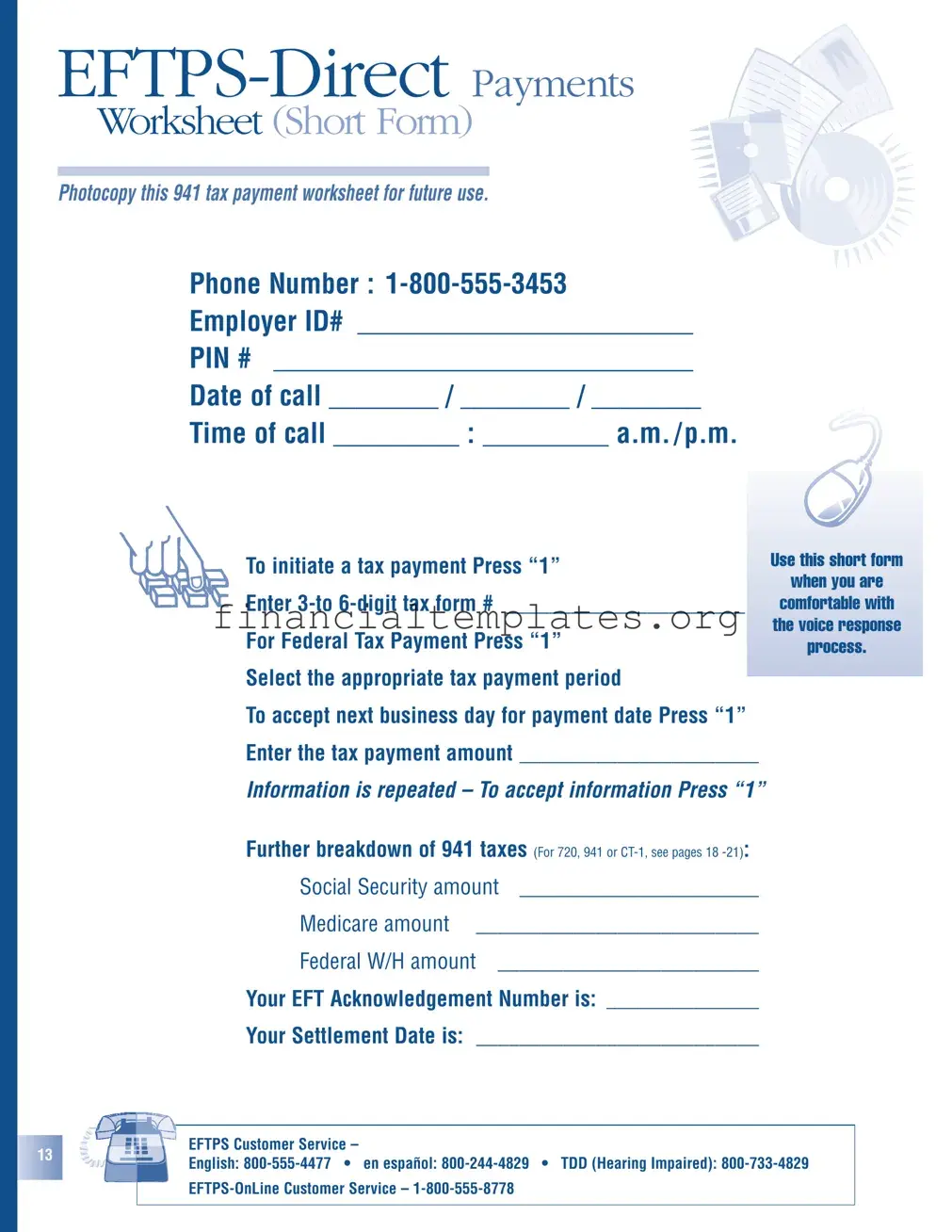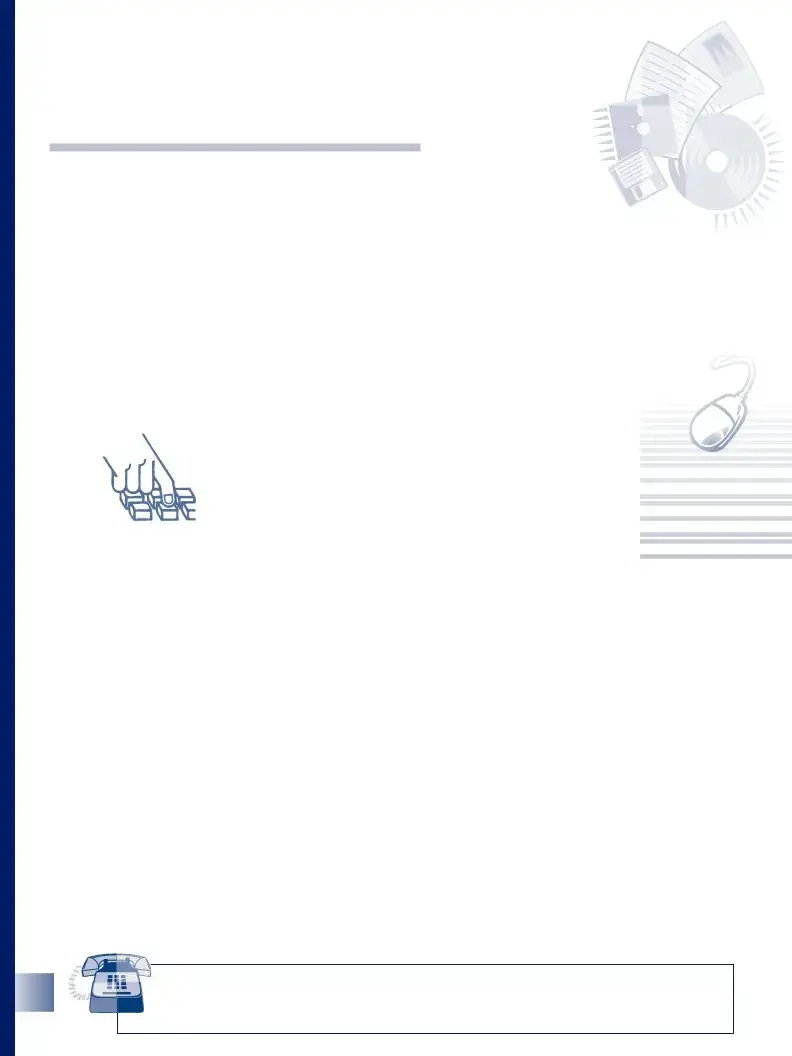The Form 1040-ES, often used for estimating taxes by individuals, is similar to the EFTPS Payment Worksheet in that it helps taxpayers calculate and remit estimated tax payments to the IRS. Both forms facilitate proactive tax payments, but the 1040-ES is specifically designed for individual taxpayers to estimate their taxes on income not subject to withholding, similar to how the EFTPS worksheet aids in processing tax payments electronically for employers.
A Form 941, Employer’s Quarterly Federal Tax Return, closely aligns with the EFTPS Payment Worksheet, since the worksheet is used as an aid in making payments that could be related to the taxes reported on Form 941. Both documents are critical for employers in managing payroll taxes, including withholding, Social Security, and Medicare taxes, ensuring proper reporting and payment of employment taxes to the IRS on a quarterly basis.
The Form 940, Employer's Annual Federal Unemployment (FUTA) Tax Return, shares a connection with the EFTPS Payment Worksheet in the context of facilitating employers’ fulfillment of their tax obligations. While Form 940 is specific to the reporting of yearly Federal Unemployment Tax Act taxes, the EFTPS Payment Worksheet can be used to remit these taxes, showcasing how both play a part in the process of tax payment and reporting for employment-related taxes.
Form W-2, Wage and Tax Statement, although primarily a form for reporting wages paid to employees and taxes withheld from them, indirectly relates to the EFTPS Payment Worksheet. The data on Form W-2, such as Social Security and Medicare taxes withheld, impacts the information and payments managed through the EFTPS Payment Worksheet, illustrating their interconnected roles in the payroll and tax reporting process.
The Form W-3, Transmittal of Wage and Tax Statements, serves to summarize the information from multiple Forms W-2 and is sent to the Social Security Administration. Like the EFTPS Payment Worksheet, it is part of the broader system of tax reporting by employers, although the Worksheet is more directly involved with the payment aspect, and Form W-3 with the reporting aspect of tax obligations.
State-specific unemployment tax forms also bear resemblance to the EFTPS Payment Worksheet, as these forms are used by employers to report and pay state unemployment taxes. While state forms vary, they align with the EFTPS worksheet's purpose of enabling tax payments, but on a state level, demonstrating how both federal and state tax obligations are managed through similar processes.
The Form 1120-W, Estimated Tax for Corporations, is akin to the EFTPS Payment Worksheet in its purpose of assisting with the estimated tax payments. However, Form 1120-W is specifically tailored for corporations, paralleling how the EFTPS worksheet facilitates tax payments but is adaptable for various types of taxes, including corporate taxes.
Form 1099 series, used for reporting various types of income other than wages, salaries, and tips, connects with the EFTPS Payment Worksheet through their collective involvement in tax payment and reporting. EFTPS may be used for remitting taxes on payments reported through Form 1099, tying both documents into the broader tax management ecosystem for individuals and businesses.
Finally, the Quarterly Federal Excise Tax Return (Form 720) shares its tax payment functionality with the EFTPS Payment Worksheet, as the worksheet can be used to make excise tax payments that are reported on Form 720. Both are essential for businesses subject to excise taxes, highlighting how specific tax obligations are facilitated through dedicated forms and payment systems.

